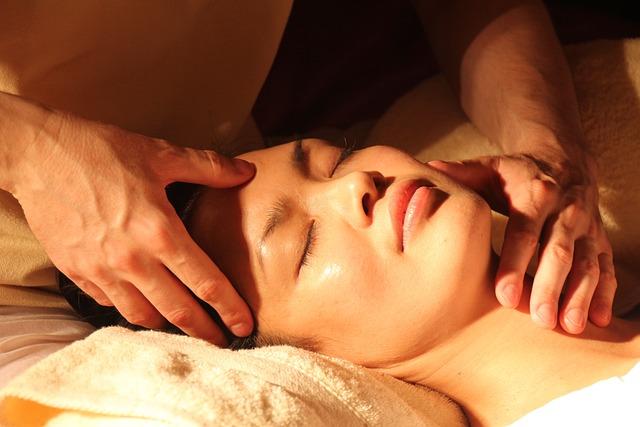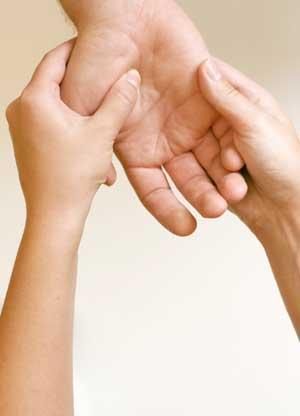In the hustle and bustle of modern life, the quest for solace often leads us to ancient wisdom. Imagine a practice where the gentle press of a fingertip could alleviate pain and melt away stress, offering a sanctuary of relief without the need for invasive procedures or pharmaceuticals. Welcome to the world of Traditional Chinese Medicine“>acupressure—a time-honored technique rooted in the rich tapestry of Traditional Chinese Medicine. In this guide, we will journey through the basics of acupressure, unveiling its potential to transform your well-being. Whether you are a seasoned practitioner or a curious newcomer, prepare to discover how the power of touch can harmonize the body, mind, and spirit, bringing balance and tranquility to your everyday life.
Understanding the Basics of Acupressure: Key Points and Techniques
Acupressure, an ancient healing technique rooted in Traditional Chinese Medicine, involves applying pressure to specific points on the body to promote relaxation and alleviate pain. Understanding the fundamental principles of this practice can significantly enhance your well-being. Here are some key points to consider:
- Meridians and Qi: Acupressure is based on the concept of meridians, which are pathways through which life energy, or Qi, flows. Balancing Qi is essential for maintaining health.
- Pressure Points: There are several key pressure points that can help with pain relief and stress management, such as the LI4 (Hegu) point on the hand and the PC6 (Neiguan) point on the wrist.
- Techniques: The most common techniques include using your fingers, thumbs, or specialized tools to apply steady, firm pressure for a few seconds to a couple of minutes.
When practicing acupressure, it’s crucial to ensure you’re applying the right amount of pressure—not too light, not too heavy. Here are some basic techniques to get you started:
- Finger Pressure: Use your fingertips to press firmly on the acupressure points. This technique is excellent for small areas.
- Thumb Pressure: Utilize your thumb for broader and more intense pressure, ideal for larger areas.
- Circular Motion: Apply pressure and gently move in a circular motion to stimulate the point and increase blood flow.
- Tools: Special acupressure tools, like balls or rollers, can help reach deeper tissues and provide more consistent pressure.

Identifying Pressure Points: A Guide to Targeting Pain and Stress
Understanding where to apply pressure is essential for effective acupressure therapy. By targeting specific points on the body, you can alleviate discomfort and promote relaxation. Here are some key areas to focus on:
- L14 (He Gu): Located between the thumb and index finger, this point is excellent for relieving headaches, stress, and facial pain.
- PC6 (Nei Guan): Found on the inner forearm, about three finger widths below the wrist, it helps with nausea, anxiety, and chest tightness.
- SP6 (San Yin Jiao): Situated on the inner leg, about four finger widths above the ankle, it is useful for menstrual pain, digestive issues, and insomnia.
Applying gentle but firm pressure to these points for a few minutes can significantly reduce pain and stress. Remember, consistency is key; regular sessions can yield better results over time.

Incorporating Acupressure into Your Daily Routine: Practical Tips and Advice
Integrating acupressure into your everyday schedule can be a game-changer for managing pain and alleviating stress. Here are some practical tips to help you seamlessly incorporate this ancient technique into your routine:
- Morning Ritual: Start your day by stimulating the LI4 (Hegu) point, located between your thumb and index finger. This can help boost your energy levels and prepare you for the day ahead.
- Work Breaks: During your workday, take short breaks to press the PC6 (Neiguan) point on your wrist. This can help reduce anxiety and improve concentration.
- Evening Wind-Down: Before bed, focus on the LV3 (Tai Chong) point on your foot to help promote relaxation and improve sleep quality.
Remember, consistency is key. By making acupressure a regular part of your routine, you can enhance its benefits for both pain relief and stress management. Make sure to listen to your body and adjust the pressure as needed to ensure comfort and effectiveness.
Exploring the Benefits: How Acupressure Promotes Overall Well-being
Acupressure, an ancient healing practice rooted in Traditional Chinese Medicine, offers a myriad of advantages that contribute to holistic well-being. By stimulating specific points on the body, it harnesses the body’s natural energy flow to alleviate various ailments. Some key benefits include:
- Pain Relief: Targeted pressure on acupoints can reduce chronic pain, including headaches, back pain, and arthritis.
- Stress Reduction: Activating these points helps to release tension, promoting relaxation and reducing stress levels.
- Improved Circulation: Enhances blood flow, which is vital for overall health and healing.
- Boosted Immune System: Regular practice can strengthen the immune system, making the body more resilient to illnesses.
Integrating acupressure into your daily routine can be a simple yet effective way to support your body’s natural healing processes, leading to a balanced and harmonious state of health.





